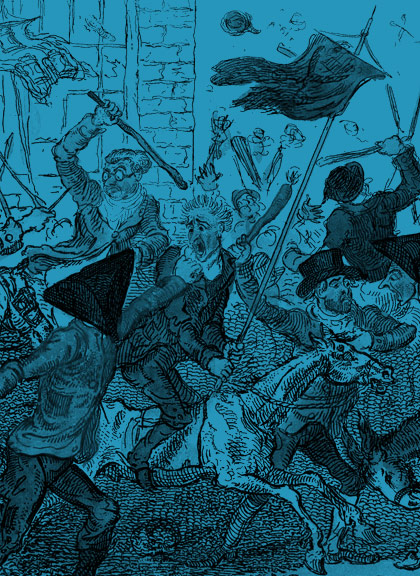The key aim of the Theatronomics project is to deliver econometric analysis of Drury Lane and Covent Garden theatres between 1732 and 1809 to facilitate and enhance future scholarship. From that high-level ambition, we have been drilling down into the nitty-gritty of the account books which, combined with the information gleaned from both London Stage Database and the Biographical Dictionary has given us data on thousands and thousands of individuals. These are the people who made up the workforce – performers, managers, ‘back of house’ staff, servants etc. – as well as the many tradesmen and suppliers who kept the candles lit and the wardrobe departments supplied with lace and linen. Getting to know them has been (and continues to be) a fascinating but challenging task, but the work will help future users of the database to understand the commercial realities of the eighteenth-century theatres.
The records are relatively good but inconsistency, gaps and sheer volume don’t make this work easy. Many new performers were unlisted on playbills and in newspaper advertisements on their first stage outing. In Covent Garden on 4 December 1747 the cast list for Venice Preserved includes ‘A Gentleman who never appear’d on any stage before’ (later identified as John Sowden, an actor of almost 30 years). How to establish if an actor thus listed went onto greater things (and therefore help us to build a picture around the play, the box-office receipts, the length of his/her career, salary, etc. all of which are of interest) or disappeared forever? Every instance of a common surname like Smith or Palmer needs careful disambiguation, and female performers often had several names throughout a career on the stage. The ‘young gentlewoman’ who continued to act after her initial outing might be subsequently listed under her maiden name until she married. Economic circumstances often meant that if widowed she might remarry, and then appear under her new husband’s name. Ann Street acted in the provinces in 1752, married in 1754 and took her husband’s name, appearing as Mrs William Dancer thereafter. She became more well known under the name of her second husband – Spranger Barry – in London, and was still acting (although not at the patent theatres) late in her life as Mrs William Crawford, her third husband’s name. Such instances are far more challenging to tie down when the actor has a shorter career or is less well-known.
As part of their contracts, star performers were granted benefit nights (their status determined whether they shared the night with others) retaining a portion of the receipts of ‘their night’. Some of the richest data available comes to us in the details around attendance levels, commentary and money taken on these benefit nights. However, to build the best picture we can, we need to consider the thousands of lesser-known performers also; those who shone brightly for a short time, those who hardly shone at all, and those steady mid-ranking players who were loyal to Drury Lane or to Covent Garden over many years but who rarely had a benefit night or saw their name on a playbill or newspaper article.
Similarly, we want to know about and show the tradespeople who supplied products and services to these significant commercial London enterprises. We’ve looked at the trade directories for the period and traced coal and timber merchants, lacemen, wigmen, upholsterers, metal suppliers and many, many others who received payment from the theatres. It must have been a significant coup to supply Covent Garden or Drury Lane, and the account books show us payments to named firms over many years, sometimes with sons taking over from fathers or business partners coming and going throughout the term of the relationship. For Covent Garden alone, we can see payments to over 1050 named recipients between 1783 and 1809 – including tradespeople, renters, annuitants etc. It is rare to see the same company listed for 25 years but appears quite common to have supplied one or both of the theatres for more than a decade.
The raw data from the London Stage Database gave us 14577 people records, the Biographical Dictionary another 2365, and we gleaned a further 1658 names from the theatres’ own account books. The total list has to be adjusted for duplicate or false entries and omissions of course, but every name encountered has a story behind it and the business of Georgian theatre is fascinating. A lot of work has been done to date, but there is more detailed prosopography ahead of the team as we follow the money to build a more complete picture of the individuals who made up the human infrastructure of London’s theatre world in the eighteenth century.
